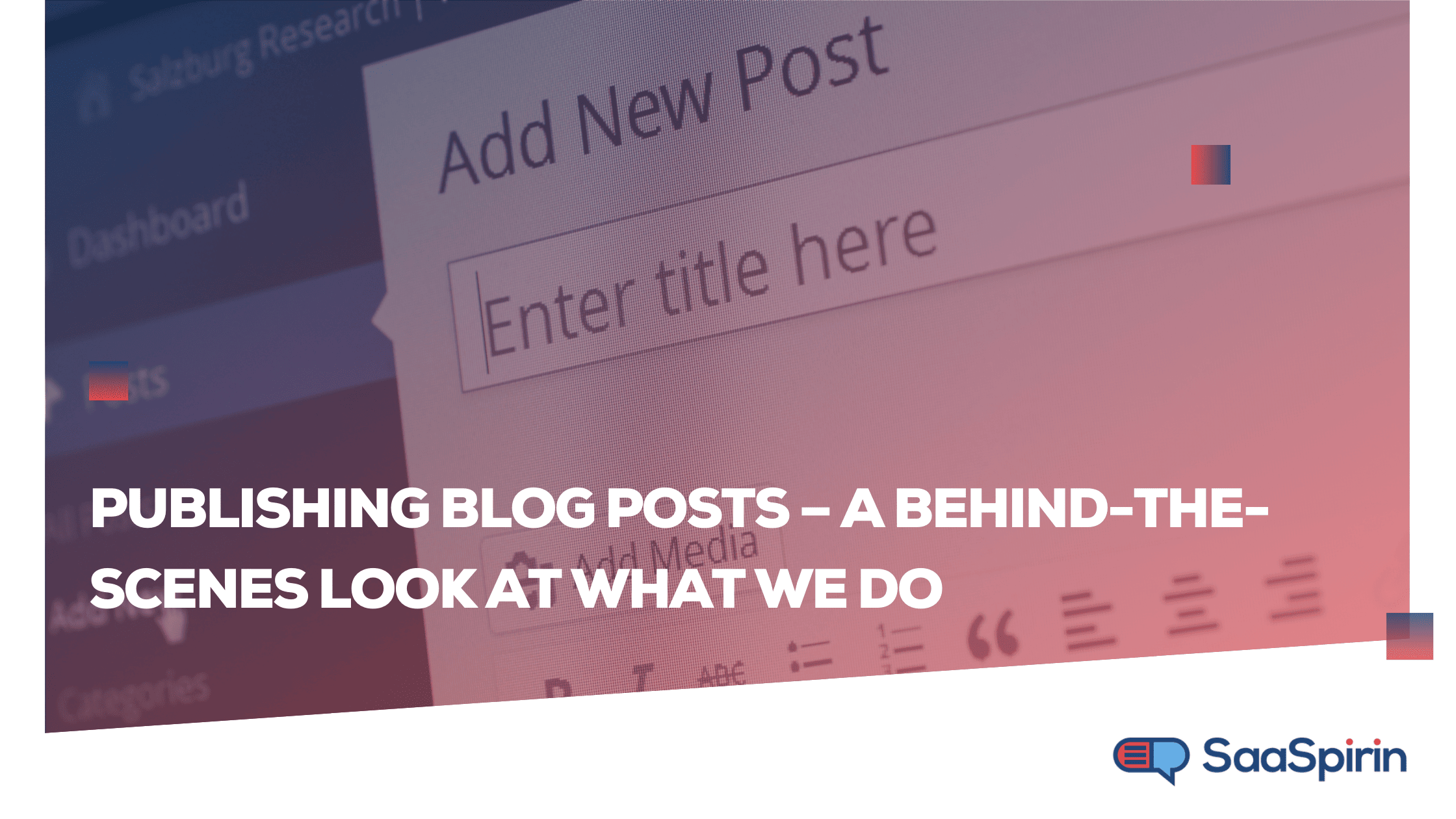How to Write a SaaS Blog: A Step by Step Guide
By Nicolas Jacobeus on February 14, 2023
.png)
Because blogs for SaaS companies differ somewhat from those written for other industries, writing for a SaaS blog will differ, too. You can overcome this challenge by bringing structure to the whole process. Let’s take a look at the most crucial steps involved in writing a SaaS blog post. As you progress through these steps, keep in mind that for your SaaS blog you will probably want to tackle product-focused content, avoid fluff and show your expertise, as well as build a consistent presence that gives you credibility.
Step 1: Know your audience
Before starting to write a SaaS blog post, you should know and understand your intended audience.
Ask yourself the following questions to start with:
- Who is my target audience?
- What are they expecting to read?
- What are the main problems and concerns they want to solve?
These questions will help you adapt an appropriate writing style that speaks to your intended audience and determine what types of posts to write—topics to cover, top-of-the-funnel (ToFu) vs. bottom-of-the-funnel (BoFu), etc.
Step 2: Choose a compelling topic
You can’t create appealing content if you don’t know what to write about. Most SaaS blog posts fail to grab the attention of the target audience because they don’t have a focus. So brainstorm different blog topics and check if they’re relevant to the current business scenario and the interests of the target audience.
Your internal SEO strategy will help you choose compelling topics at this stage in how you write your SaaS blog post. Since your SEO strategy must have already identified the top keywords for your SaaS business, you might like to choose a keyword and weave the topic around it.
Evaluating your competitors’ blogging strategies and identifying the keywords they’re focusing on may also help determine the best topics for your SaaS business.
Step 3: Create an outline
After determining the topic, the next step is to create an outline. Here’s where the rubber meets the road when you’re working out how to write a SaaS blog post. Creating an outline will help you paint a clear picture and good flow.
The main benefits of an outline for your SaaS blog post are:
- It organizes your thoughts and helps you gather the right data points to complete your blog post.
- It helps you write the blog post much faster than you would otherwise, because you have a clear blueprint.
- It helps you communicate your ideas more clearly.
The outline should comprise several elements, including the working title, headings, subheadings, details or data points to be included under each subheading, and the conclusion.
Step 4: Start writing your SaaS blog post
With a clear outline in hand, you can jump into writing the SaaS blog post. Just follow your outline and gather the relevant data to write the draft for the blog post. Remind yourself that you’re writing the draft—a preliminary version of your blog. So don’t worry if your draft is clumsy and uninteresting. You are going to edit and fine-tune the draft later to make it readable and enjoyable for the intended audience.
Don’t overcomplicate your writing: Just write like you’re speaking with a friend or colleague. Unnecessary technical jargon and lengthy sentences may bore your audience. The best practice is to use simple language and write short paragraphs with 2–4 sentences.
The following tips can help you make your blog post interesting for the target audience:
- Use a casual and conversational tone.
- Use statistics and support claims with original data sources.
- Go easy on the third-person pronouns. Using first- and second-person pronouns such as “you” and “we” will help you connect with the audience.
Step 5: Edit and revise your SaaS blog post
Editing and writing are two different skills. If you worry about editing your article while writing, you’ll end up wasting a lot of time. The best practice is to edit the article only after you finish the first draft. If required, ask an external editor to review the draft and suggest changes.
Step 6: Optimize for search
If the article is appropriate to optimize for search (and most are), you should ensure you’ve woven a target keyword into the headline, subheads, and text. A good meta description will help with click throughs from the search engine results pages, and this engagement will further help your SEO.
You have a couple choices in how you approach keywords in your content. If your goal is SEO, then you’ve probably used keywords to help you determine what to write. But if you’re just writing about a topic that your audience needs to hear about and SEO is secondary, you can often still find a keyword that will work anyway.
Though we’re focused on how to write a SaaS blog here, you should also think about visuals. You’ll want images that clearly illustrate the concepts, because remember your target readers are busy. Consider images that increase engagement, because more click throughs and time on page will help improve your blog posts’ SEO performance.
High-quality blog posts for your SaaS business are within reach
Inbound marketing enables an enterprise to organically attract target customers and engage them with the help of useful content. Blogging is the best strategy for inbound marketing. Since over 77% of internet users read blog posts to gain knowledge, creating compelling content will help your SaaS business reach prospects, nurture leads, build trust, and create a strong brand authority.
Creating a unique SaaS blog post that appeals to your target customers doesn’t have to be complicated—as long as you understand your intended audience, choose a great topic, and have a clear outline in hand.
Need some extra support? Reach out to SaaSpirin to learn how we can deliver the kind of SaaS blog content you’re looking for.
You May Also Like
These Related Stories

Publishing Blog Posts – A Behind-the-Scenes Look at What We Do

Top SaaS Bloggers and Techniques We Can Borrow From Them

